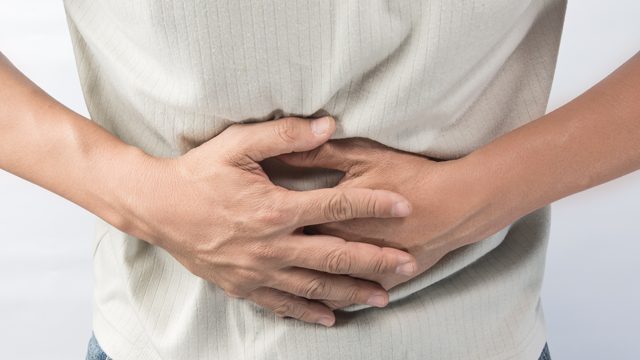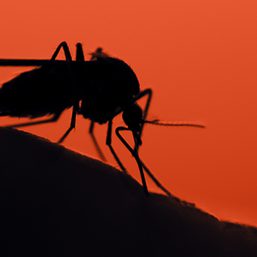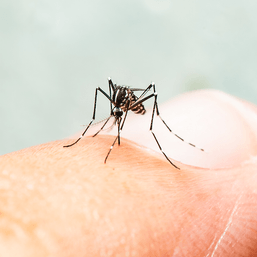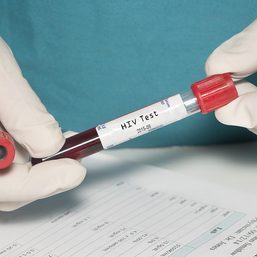SUMMARY
This is AI generated summarization, which may have errors. For context, always refer to the full article.

DAVAO CITY, Philippines – On its sixth day, the diarrhea outbreak in the Toril District in Davao City continued with cases climbing up to 212 cases from 147 in just two days.
Davao City also saw two diarrhea-related deaths – a 67-year-old female and a 10-year-old boy who both died at the Southern Philippines Medical Center (SPMC) on Tuesday, July 19, when the City Health Office recorded 147 cases.
The number of diarrhea cases increased by 65 or about 30% in just two days.
Dr. Ashley Lopez, Davao City health officer, said the elderly woman sought medical help on July 17 after experiencing acute gastroenteritis. She suffered a hemorrhagic stroke two days while under treatment.
The boy, meanwhile, had malignant dysentery or severe diarrhea when he was brought to a private hospital in Toril. He was later sent to the SPMC’s intensive care unit where his kidneys eventually shut down, according to Lopez.
The SPMC laboratory has yet to release the test results on the samples the CHO submitted on July 18.
Lopez said SPMC’s method of analysis requires a culture medium or allowing the bacteria to grow first within 48 to 72 hours to five days.
“Today (July 21), we expect the release of the results of the first batch of samples we sent to SPMC last Monday. The lab must have limitations. We didn’t expect this kind of outbreak. Imagine the 212 cases, and then there are probables… Every day, we submit samples to SPMC,” he said.
Lopez said the samples were collected from the city’s tap water supply and street food, suspected causes of the outbreak.
Local health authorities said the majority of those who fell sick were not older than 35 years old, many of whom were children younger than five years old.
The CHO said the diarrhea outbreak has now affected people in 21 barangays, three of which were outside the Toril District.
“Although the cases outside Toril seem isolated, we have to include their cases as they also complained of diarrhea symptoms,” Lopez said.
The village of Daliao was the worst hit with 41 cases, followed by the Toril proper with 37, Lubogan with 35, and Bayabas with 32.
Lopez said four experts from the epidemiologic bureau of the Department of Health (DOH) central office came over on Thursday to conduct a third-party investigation into the outbreak.
“The epidemiology experts are now in Toril and they will be here until July 30 to do their investigation,” said Lopez.
At the Davao city council on Tuesday, July 19, Davao City Water District (DCWD) water quality division manager Hydie Maspiñas ruled out the possibility of contamination of wells and other water sources of the facility.
Maspiñas said test results on water samples on Monday, July 18, showed the water sources were free from e.coli and fecal coliform contamination.
She said the outbreak was not water-related based on the DCWD analysis.
“We stand by our analysis. Whatever might be the result of CHO independent sampling and testing, we shall honor the same,” said Maspiñas.
Davao Councilor Trisha Ann Villafuerte, a physician by profession, said CHO records showed that gastrointestinal diseases were one of the top health problems in the city as early as 2014.
Villafuerte also cited a study conducted by the University of Immaculate Conception (UIC) in 2016 that showed the waters of the Talomo and Davao Rivers – the two main sources of tap water in the city – had high alkalinity and fecal coliform counts.
She said the same study confirmed that the rapid increase in population, urbanization, and industrialization continuously reduced the quality of the waters in the Philippines.
“This amount of information and outbreak frequency created a serious dilemma. We have experienced frequent rainfall, more than usual, causing floods that could contaminate our water reservoir. As of now, we remain uncertain about what is causing this outbreak,” said Villafuerte. – Rappler.com
Add a comment
How does this make you feel?


![[The Slingshot] Lito Patay’s 4 hours and 38 minutes of infamy](https://www.rappler.com/tachyon/2024/07/Lito-Patay-4-hours-infamy-July-19-2024.jpg?resize=257%2C257&crop=233px%2C0px%2C720px%2C720px)

![[Pastilan] The Great Philippine Identity Sale](https://www.rappler.com/tachyon/2024/07/great-philippine-identity-sale-july-16-2024.jpg?resize=257%2C257&crop=486px%2C0px%2C1080px%2C1080px)










![[Free to disagree] Ending victimhood](https://www.rappler.com/tachyon/2024/05/TL-Ending-victimhood-May-20-2024.jpg?resize=257%2C257&crop_strategy=attention)






There are no comments yet. Add your comment to start the conversation.